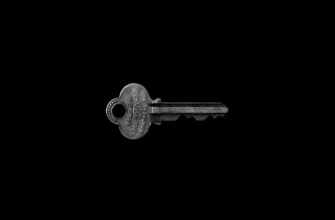- Why Private Key Backup is Your Digital Lifeline
- 7 Best Practices for Backing Up Private Keys Securely
- Critical Mistakes That Compromise Key Security
- How to Test Backups Without Risking Assets
- Frequently Asked Questions (FAQs)
- Can I store my private key in a password manager?
- How often should I update my private key backups?
- Is it safe to split my key phrase among family members?
- What’s more secure: paper or metal backups?
- Can I recover crypto if I lose all private key backups?
- Final Security Imperatives
Why Private Key Backup is Your Digital Lifeline
In cryptocurrency and digital security, your private key is the ultimate key to your kingdom. Lose it, and you permanently lose access to your crypto wallets, encrypted files, and digital identity. Unlike passwords, private keys cannot be recovered through reset links or customer support. Hardware fails, phones get damaged, and cloud services get hacked—making secure backups non-negotiable. This guide details professional best practices to backup private keys safely, ensuring your assets remain under your control.
7 Best Practices for Backing Up Private Keys Securely
- Use Physical Media for Primary Backups
Store keys offline on corrosion-resistant materials like:
– Stainless steel crypto plates (fire/water-proof)
– Engraved metal tags
– Acid-free paper stored in sealed bags - Implement Multi-Location Storage
Distribute backups across 3+ geographically separate locations (e.g., home safe, bank vault, trusted relative’s house). Never store all copies in one place. - Encrypt Before Digital Storage
If storing digitally:
– Encrypt keys using AES-256 encryption
– Use VeraCrypt for encrypted containers
– Never store unencrypted keys on cloud services or USB drives - Apply Shamir’s Secret Sharing (SSS)
Split keys into multiple shards using cryptography. Example: Divide into 5 shards requiring 3 to reconstruct. Store shards separately. - Regular Verification Schedule
Test backups quarterly:
1. Access one backup copy
2. Verify key functionality with minimal transaction
3. Re-secure immediately after verification - Eliminate Digital Traces
– Wipe printer memory after printing paper backups
– Use dedicated offline devices for key generation
– Never screenshot or email private keys - Establish Inheritance Protocols
Create encrypted instructions for trusted beneficiaries using multi-sig wallets or legal documents stored with attorneys.
Critical Mistakes That Compromise Key Security
- ❌ Storing keys in password managers or notes apps
- ❌ Taking photos of seed phrases with internet-connected devices
- ❌ Using cloud storage without end-to-end encryption
- ❌ Sharing full keys with family members verbally
- ❌ Keeping all backups in a single fireproof safe
How to Test Backups Without Risking Assets
Follow this secure verification protocol:
- Transfer a trivial amount of crypto to a new wallet
- Use the backup to restore wallet access
- Send the test amount back to your main wallet
- Wipe all temporary devices used in the process
- Re-secure backup materials immediately
Always conduct tests on an air-gapped computer when possible.
Frequently Asked Questions (FAQs)
Can I store my private key in a password manager?
No. Password managers are online targets. Private keys require offline storage with physical redundancy.
How often should I update my private key backups?
Only when creating new wallets. Existing key backups should remain unchanged. Update storage locations annually.
Is it safe to split my key phrase among family members?
Only using Shamir’s Secret Sharing. Never give any single person full access. Require multiple shards for reconstruction.
What’s more secure: paper or metal backups?
Metal backups (stainless steel plates) are superior for fire/water resistance. Paper should be a temporary solution only.
Can I recover crypto if I lose all private key backups?
No. Private keys grant exclusive control. Without any backup, assets are permanently inaccessible—highlighting the critical need for redundant, verified backups.
Final Security Imperatives
Your private key is the irreplaceable gateway to your digital wealth. By implementing multi-location physical storage, cryptographic splitting, and regular verification, you create a bulletproof safety net. Start today: Audit existing backups, eliminate digital exposures, and remember—in decentralized systems, you are your own bank. There are no second chances with private key security.








